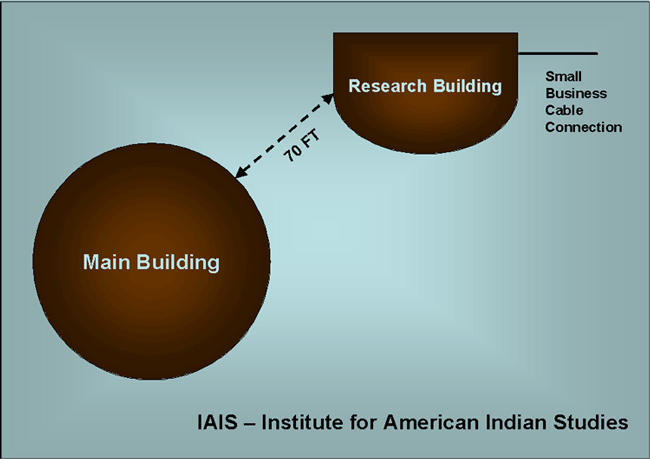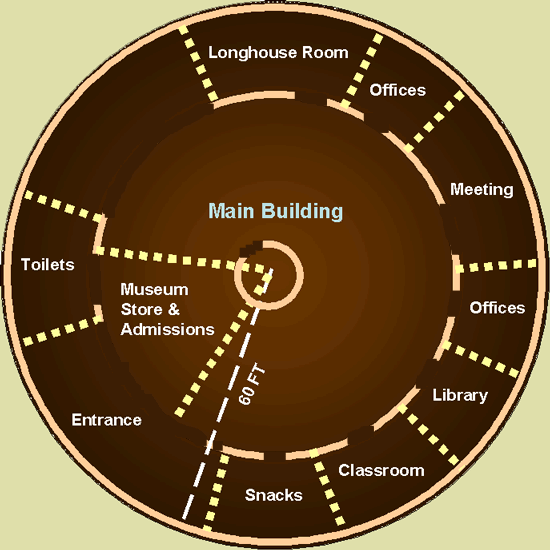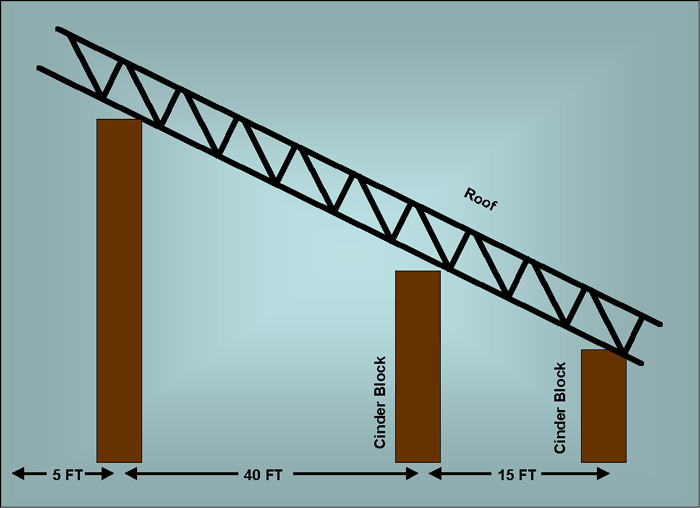
The Institute for American Indian Studies
| Background.
The IAIS is the development of some
archaeologists, some wealthy benefactors and many others interested in
what I will call Amerindian life, both past and present. I am currently their webmaster for the IAIS which is at birdstone.org. While it remains a pretty low tech operation, I have been able to get them to do several things with their web they have not done in the past. But for the course we are looking at their networking infrastructure, which is essentially nonexistent. The IAIS has several major resources.
The IAIS has a very small fulltime staff
Their part time staff is largely for support or for offsite educational programs. As a reasonable estimate, let's say they have 8 part time employees that are likely to need access to their computer systems. In addition, they have a number of research associates, people with the following sorts of expertise's.
The Building Infrastructure. The IAIS is situated on about 11 acres of land in Washington, CT. While they have things like nature trails and a replicated Algonkian Village, their primary site plan is like the following. |

| The main building is a sort of enlarged and flattened teepee. Since it's construction and layout is more complicated I will take the time to give much more information. First you should look at the following diagram which will be explicated further. |

| While this is somewhat of an oversimplification,
for the purposes of network design it is sufficient. The central supports of the teepee is a cylinder of cinder blocks. In some places the blocks are hidden within sheet rock coverings. The girders under the roof are usually exposed. There are three concentric cinder block walls that the roof girders essentially rest upon. |

| The wall of the innermost cylinder is only about
5 feet in radius. The next cylinder wall is 40 feet out from
this. The final wall, corresponding to the outer wall of the
building, is another 15 feet beyond this second cylinder wall.
There are doorways through these cylinders to connect different
interiors. You need to make sure to notice where exhibit space is located, where office space is located and where the museum store and admissions are located with respect to these walls. The cinder block has actually been colored and formed with a facade to look more presentable, but it is actually somewhat thicker due to this. The Research and Collections building is really much simpler with a first floor containing offices, some exhibit space and a basement for storing collections. All of the load bearing walls are cinder block of construction similar to that within the Visitor Center. But these walls are only on the exterior. All interior walls are sheet rock and there aren't that many of them. The floors have a typical wood frame construction over metal girders for span. You should think of the Research and Collections building as being 45 feet by 30 feet, ignoring curves. |